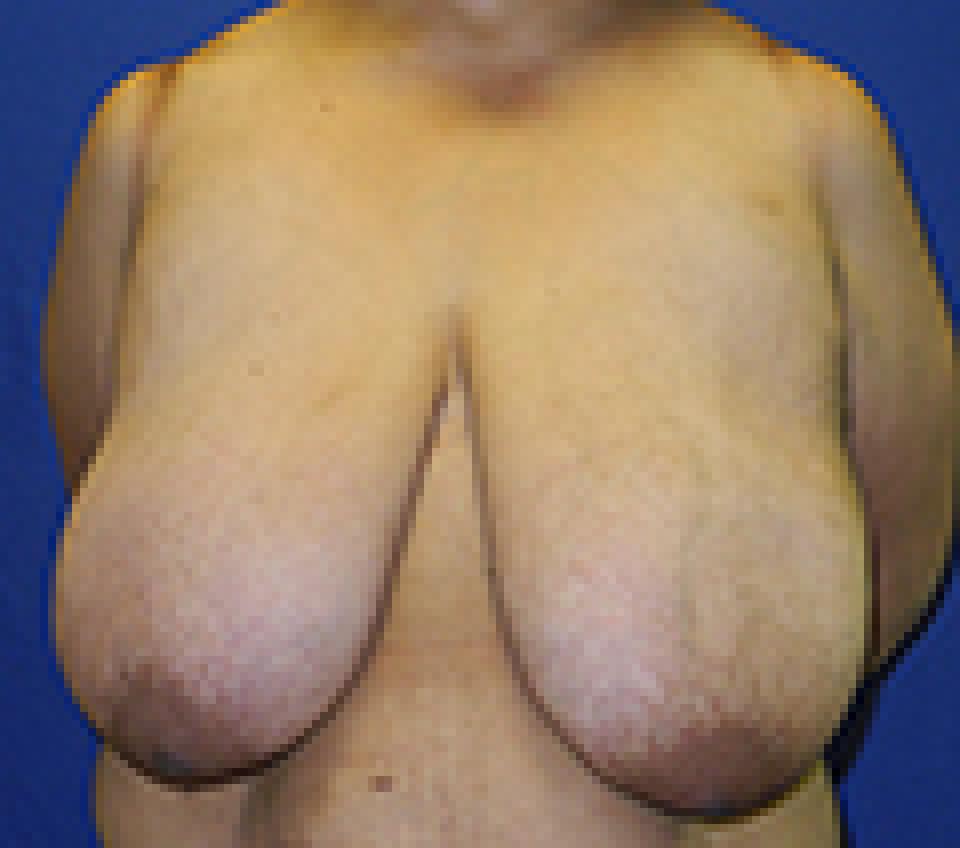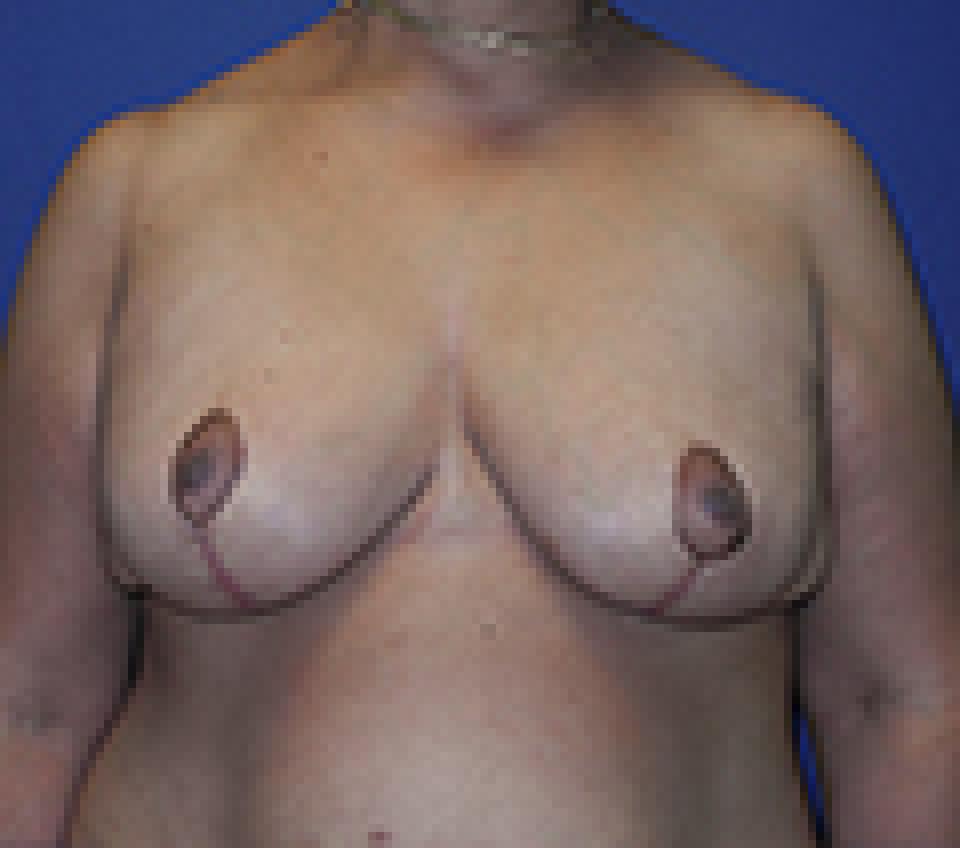Pectoralis Muscles
The term is derived from the Latin pectus, meaning the breast area. There are two muscles, pectoralis major which is prominent, and pectoralis minor which is hidden. The prominent muscle is the one the muscle builders refer to as the “pecs.”
Pectoralis major is the anterior portion of a sheet of muscle which includes the trapezius posteriorly and the deltoid laterally; all find attachment to the collar bone (clavicle). The central bony attachment of pectoralis major is from the medial half of the clavicle, the margin of the breast bone (sternum), the ribs, and the thick fascia over the abdominal muscles. There are easily recognisable three segments of the muscle, functioning collectively or separately. As the fibers pass laterally, the lowermost pass behind the uppermost, forming a rounded lower border at the anterior wall of the armpit (axilla) converging on the tendon which is inserted into the humerus.
The muscle functions in drawing the arm to the body, as in pulling down a rope, or the body to the arm, whichever is fixed, as in raising oneself on a beam.
Pectoralis minor is completely hidden beneath major. Its medial attachment is to the 3rd, 4th, and 5th ribs; the fibers pass up and out to attach to the coracoid process of the shoulder blade (scapula). The tip of this process is easily felt below the mid-point of the clavicle.
Although this muscle will stabilize the shoulder blade when the arm is used, and to an extent pull the arm forward around the chest (protraction) it is probably of most value as a secondary muscle of respiration. The runner will unconsciously hold his hips when standing out of breath following a race – what in fact he is doing is to stabilize the scapula so pectoralis minor can assist in lifting the ribs to enhance the volume of air entering the chest in forced inspiration.
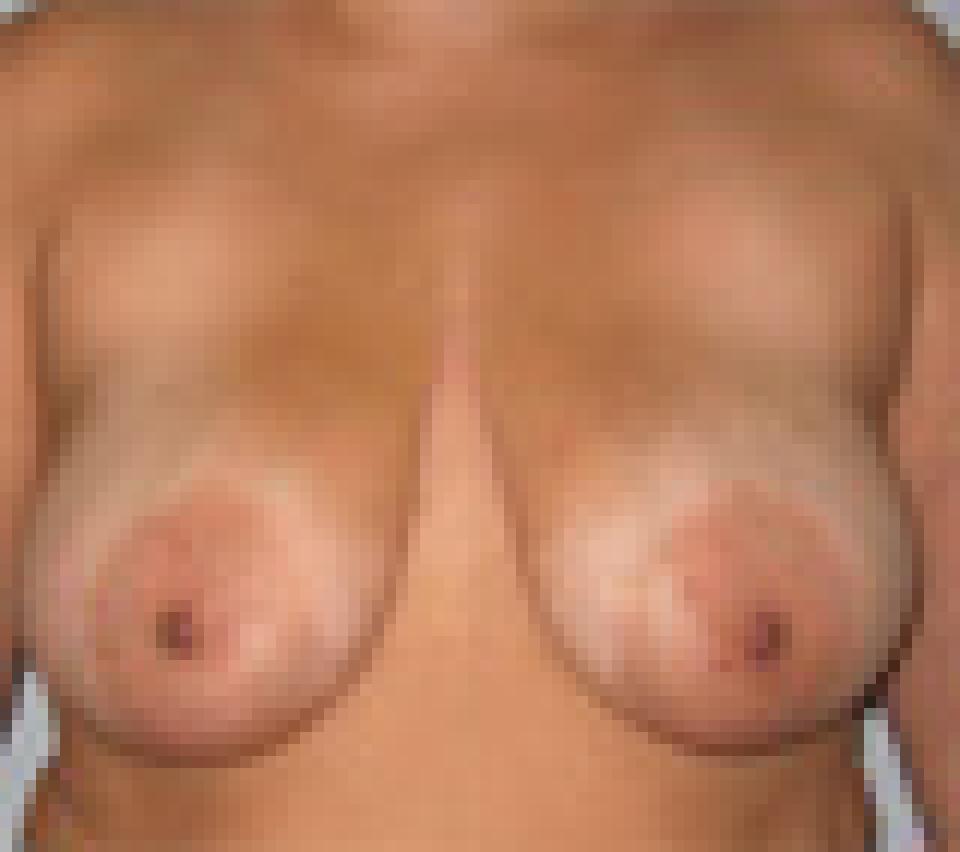 before
before
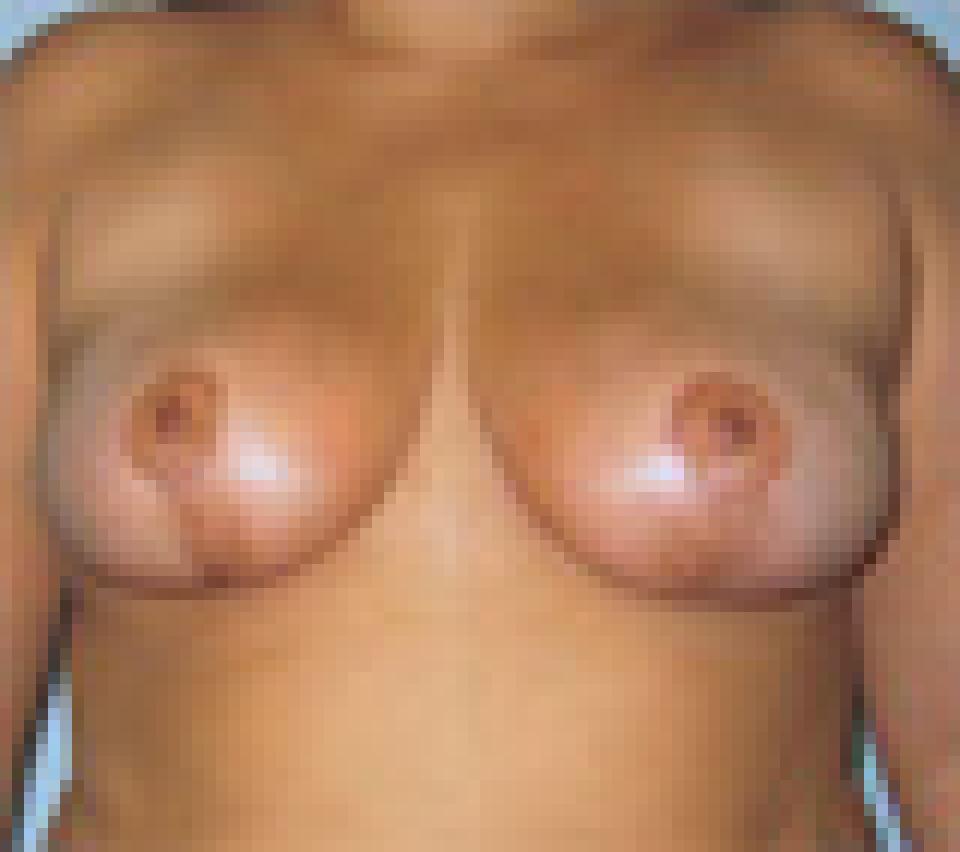 after
after
This case depicts a 41 year old woman who wished to have slightly smaller and shapelier breasts. She underwent breast reduction using an inverted T or "anchor" incision pattern.
Her post-operative photographs depict her appearance approximately two months after surgery.
With optimal design before surgery, the portion of this incision that runs along the fold of the breast is nearly completely hidden. Reduction of the areolar size for balance and proportion is an additional advantage of this procedure.
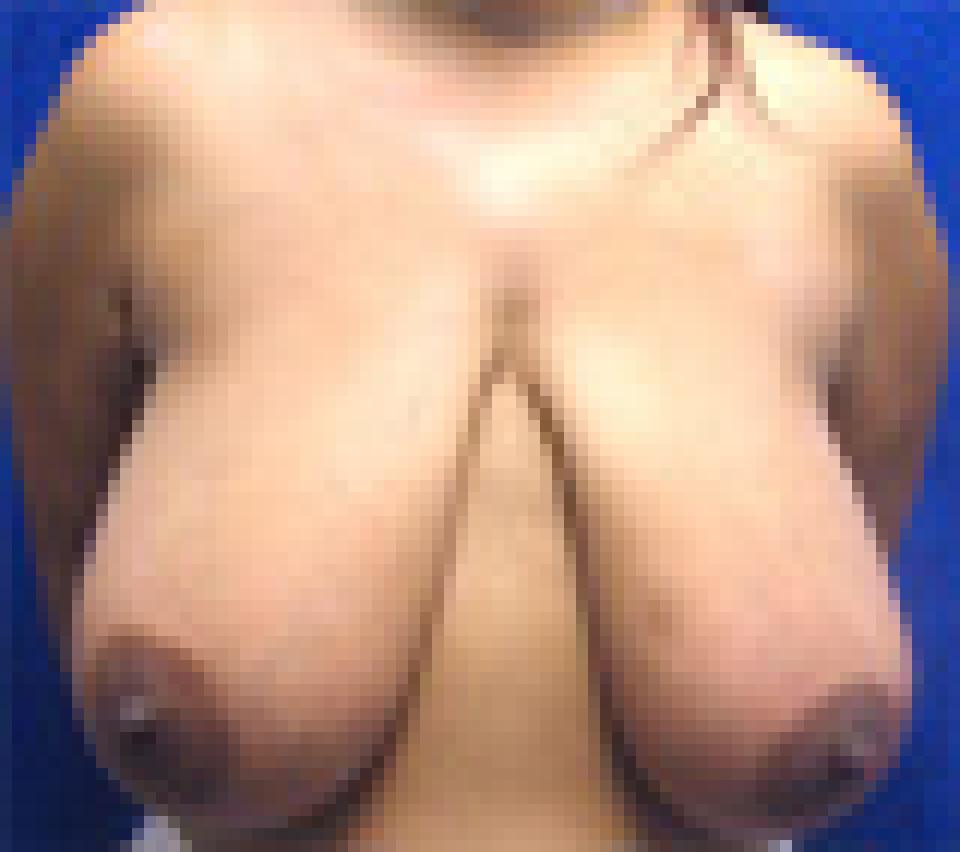 before
before
 after
after
This case depicts a 29 year old woman with symptomatic breast hypertrophy who underwent a breast reduction using the inverted T or "anchor" incision pattern. Because of this individual's symptoms, medical insurance covered a portion of the costs of this procedure.
Not only did her symptoms improve following surgery, but she also gained a more aesthetically proportionate breast. Her post-operative photographs show her appearance approximately one month after surgery.
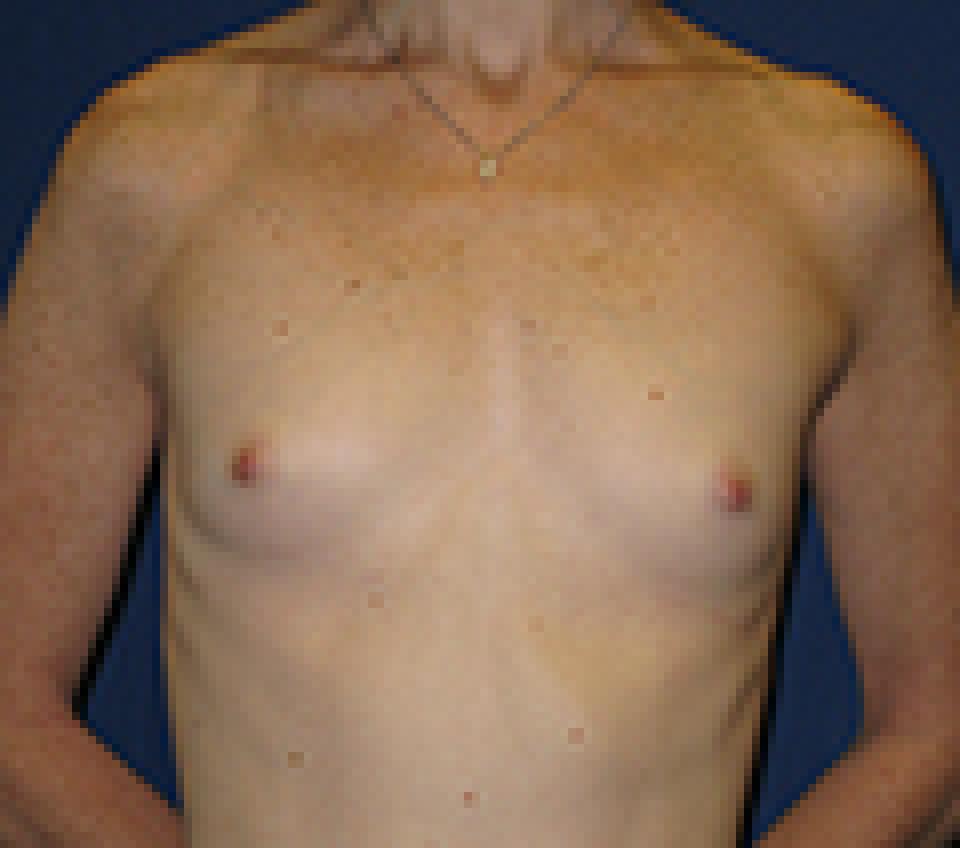 before
before
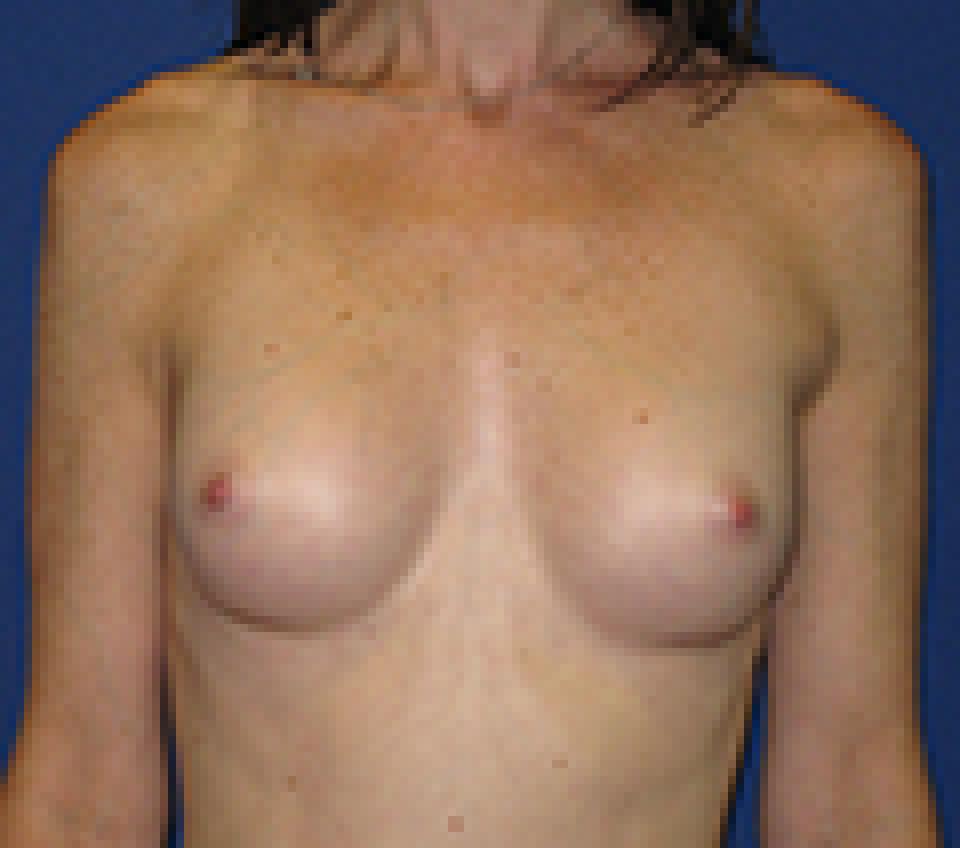 after
after
This 30 year old woman underwent breast augmentation using 180 cc silicone filled breast implants placed partially beneath the pectoralis muscle through an incision along the lower fold of the breast that measured 3 centimeters in length.
Implants can also be inserted through an incision on the edge of the areola, which is the dark colored skin surrounding the nipple. However, when an individual has very small areolas, such as this patient has, this is not possible.
On the other hand, if the areolas are too large or irregularly shaped, they can be resized and reshaped at the same time as a breast augmentation and/or a breast lift is performed. This will, however, result in a scar around the periphery of the new areola. Often, these scars can heal quite well and are less objectionable in their appearance than overly large or irreguarly shaped areolas.
 before
before
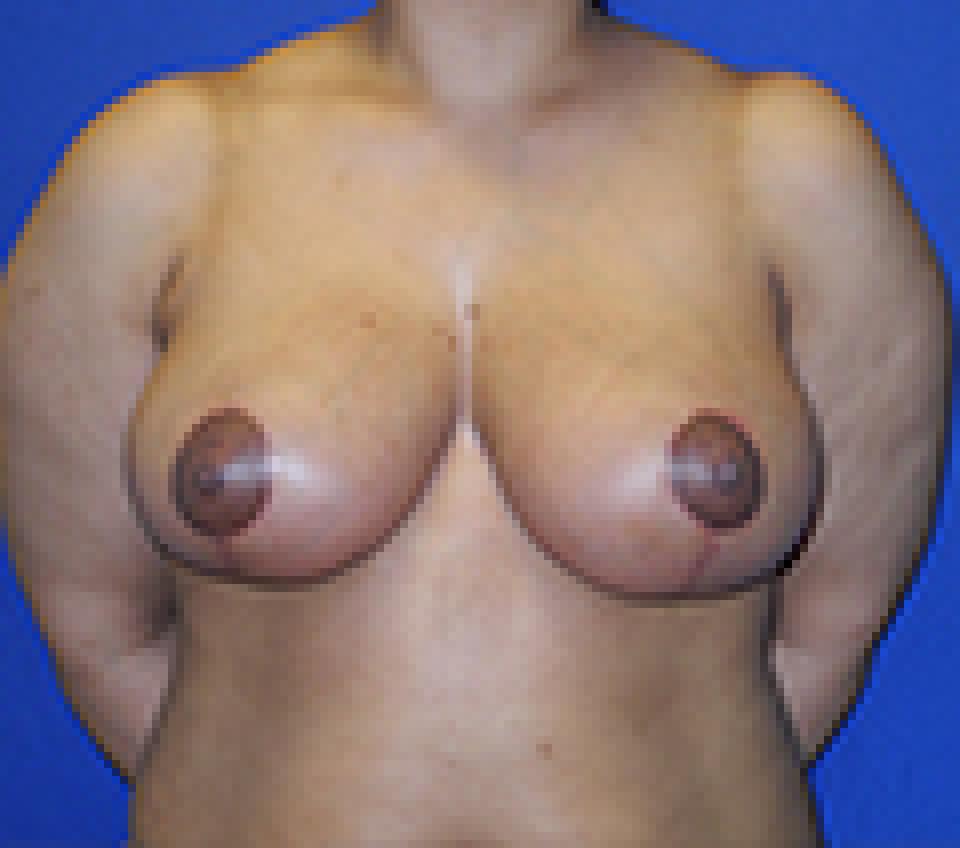 after
after
This 31 year old woman underwent breast reduction in which approximately one and one third pounds of tissue was removed from the right breast and almost two pounds of tissue was removed from the left breast.
In this individual’s case, the incisions used to perform the breast reduction were of the “lollipop” or short scar type. This method of breast reduction avoids any incisions in the cleavage and in most instances along the lower fold of the breast.
This woman, like many others, had noticeably asymmetric breasts. In her case, the left breast was noticeably larger than the right breast. I make every effort to correct this during surgery, but ultimately, no two sides look identical after surgery- just as they did not before surgery.
Also very visible in this individual are the "shoulder grooves" from her bra straps. This is a common issue in women who have extremely large breasts or "macromastia." The pressure from the bra straps typically cause pain, open wounds and sometimes even numbness and tingling in one or both hands from compression of the underlying nerves. Breast reduction can alleviate these symptoms almost instantaneously.
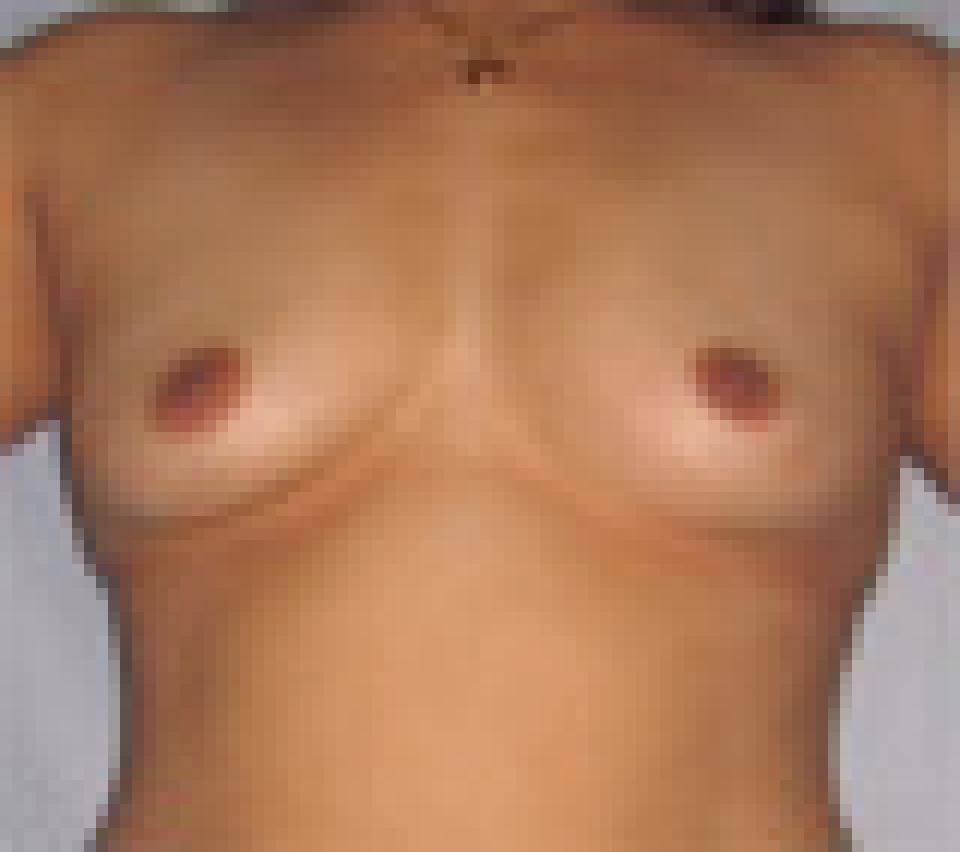 before
before
 after
after
This case depicts a 40 year old woman who wished to have a larger and fuller bust.She underwent placement of 350 cc smooth, round saline implants. The implants were placed partiallly beneath her pectoralis muscles through an incision in the lower fold of the breast.
The post-operative photographs depict her at 3 months after surgery. The inframmamary fold incision is a particularly good option for women who have a well-developed breast fold before surgery. Because of this individual's anatomy, the incisions will be difficult to see at any angle.
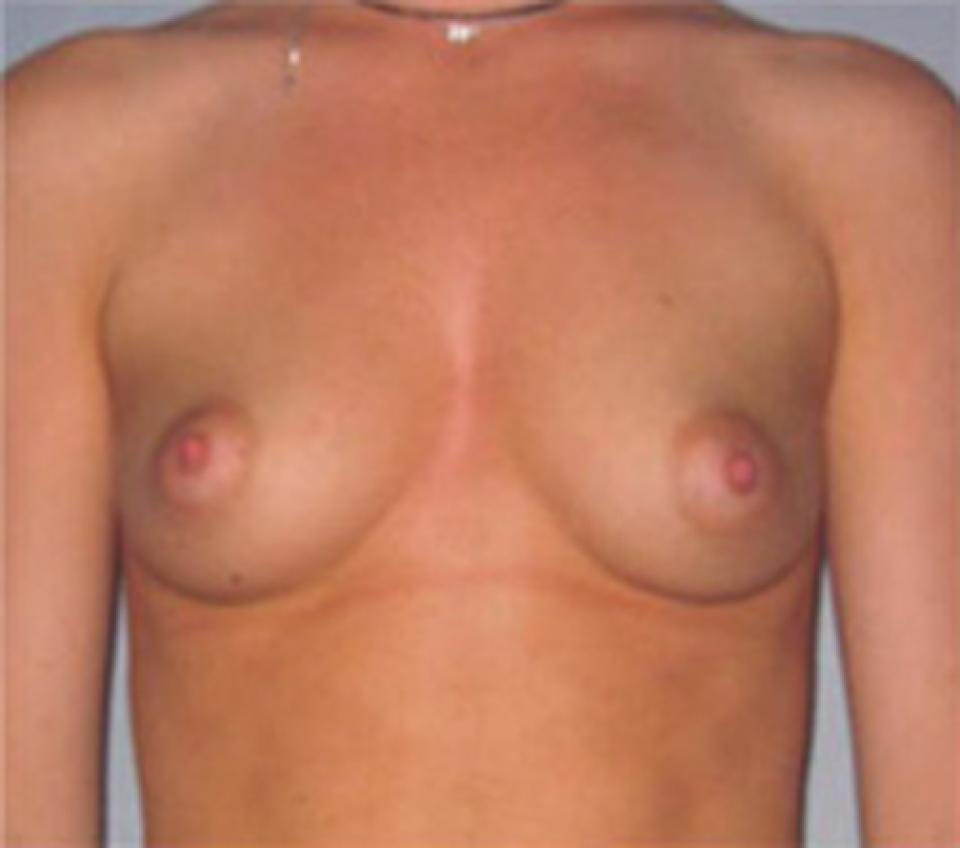 before
before
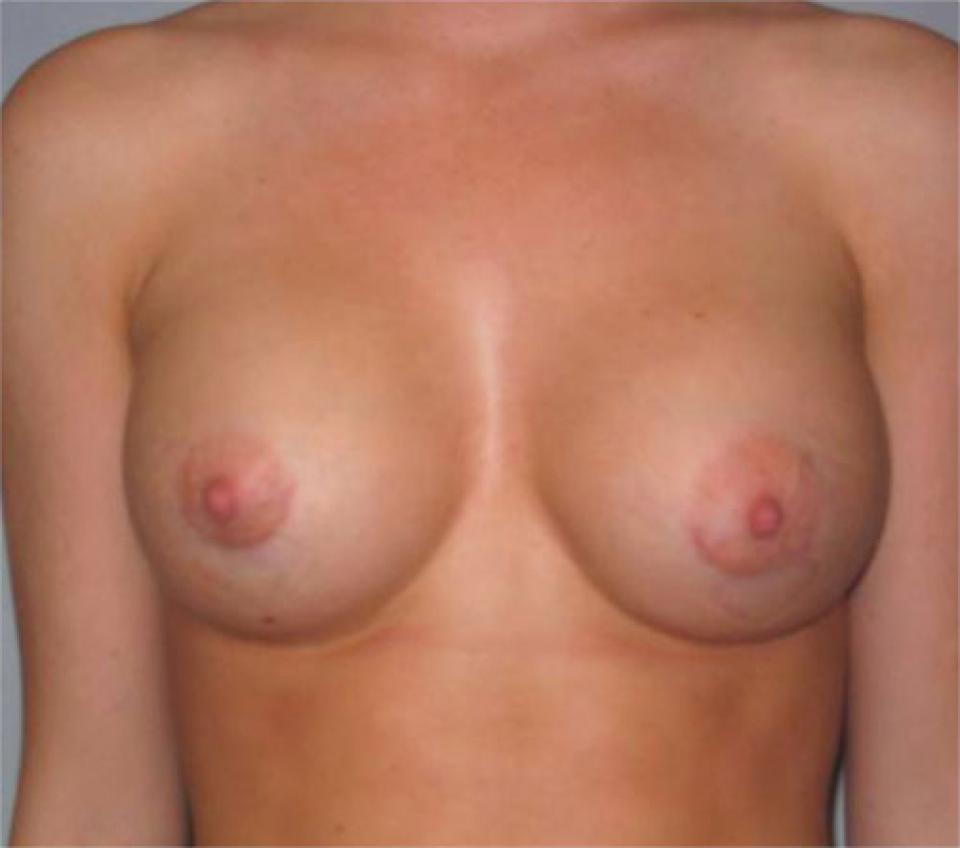 after
after
The following photographs depict an 18 year old woman who wished to have a larger and fuller bust. She underwent breast augmentation with smooth, round 330 cc saline implants.The implants were placed beneath her pectoralis muscles using incisions placed within the areolas.
The post-operative photographs depict her at approximately 6 months after her surgery. Peri-areolar incisions can heal nearly imperceptibly. They are hidden in virtually all fashions and swimwear. Dr. Belsley can place either saline or silicone implants through this type of incision.
 before
before
 after
after
This case depicts a 37 year old woman who had borne one child and had noted that her breasts had begun to sag and develop a deflated appearance.
She underwent a vertical or "lollipop" incision breast lift along with placement of 300 cc smooth, round saline implants beneath the pectoralis muscles. Her post-operative photographs depict her appearance approximately one year after surgery.
This case study also demonstrates how the nipple and areolar positions located too low and too close to the midline in this case, can be improved as part of the procedure.
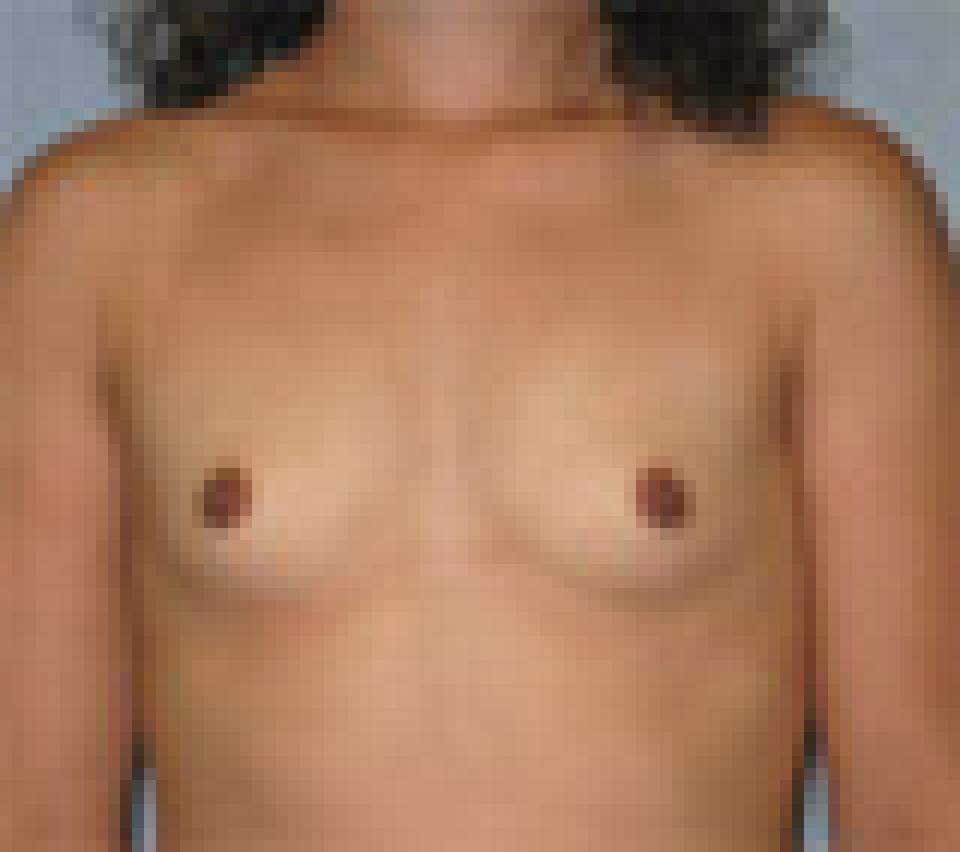 before
before
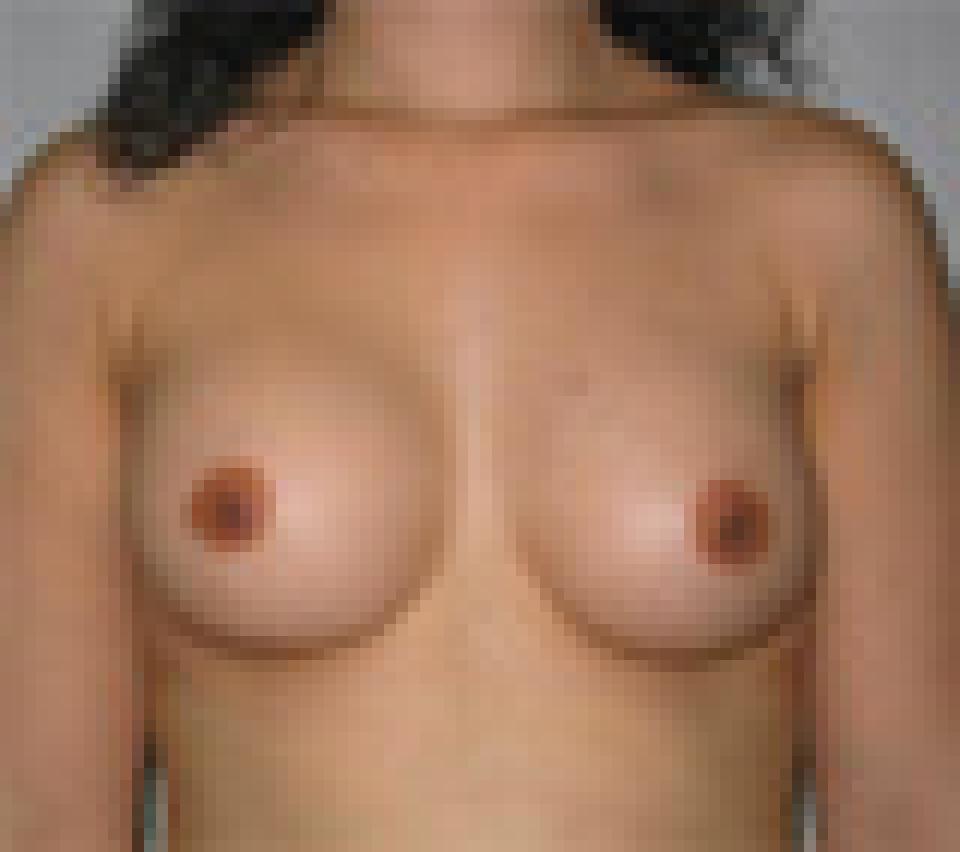 after
after
This case depicts a 29 year old woman who wished to have a larger and fuller bust. She underwent breast augmentation with smooth, round 350 cc saline implants.The implants were placed beneath her pectoralis muscles through an incision in the lower fold of the breast.
The post-operative photographs depict her at approximately 3 months after surgery. The infra mammary incision is a good option for women whose areolas are too small to undergo breast augmentation. Other options for such an individual include placing an incision in the axilla.
 before
before
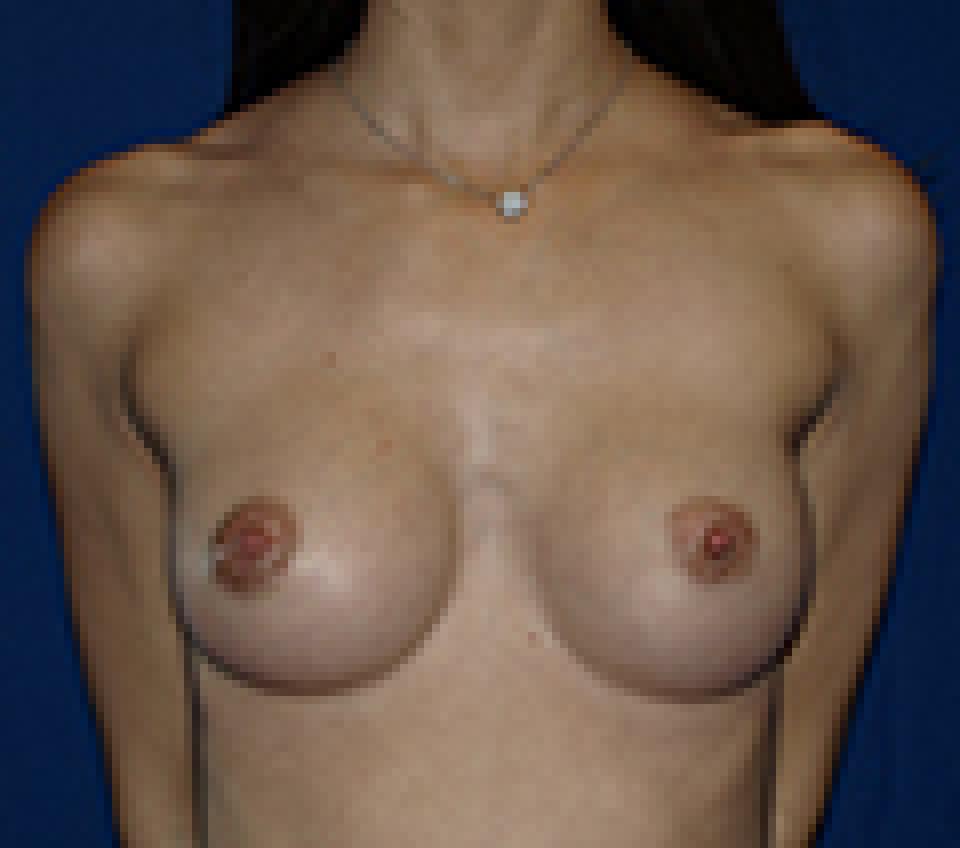 after
after
This 32 year old woman underwent breast augmentation using saline filled breast inflated to a volume of 195 cc’s and placed partially beneath the pectoralis muscle.
The individual has a mild pectus excavatum, a condition in which a person's breastbone is sunken into the chest. She also has a tendency to stand in a slightly kyphotic position, which means that her upper back is rounded and her head is relatively forward.
Obtaining a natural looking result in a patient who has pectus excavatum and postural abnormalities, as this individual has, can be challenging but is certainly possible.
In the case, the implants were inserted through a 3 cm incision at the lower border of the areola, which is the darker skin surrounding the nipple. These incisions typically heal quite well and can be difficult to see.
Dr. Belsley's Philosophy of Breast Augmentation
When it comes to deciding what approximate breast size you wish to achieve, the best advice I can give you is that you should be guided by your physical frame. Indeed, you may in fact be limited by it. In my practice, I select implants based upon your chest measurements, the quality of your breast skin and the size of your breasts prior to surgery.
I perform breast augmentation through a peri-areolar or inframammary approach and I place that vast majority of implants at least partially beneath the pectoralis muscle. My patients are welcome to select either saline or silicone filled breast implants. Silicone filled implants can in some cases achieve a more natural feel and may be a particularly attractive option for women with less breast tissue prior to surgery.
More >>Dr. Belsley's Philosophy of Breast Revision
I apply the same criteria to patients who have had their surgery elsewhere as I do to my own patients. I am typically reluctant to re-operate on a breast augmentation patient for minor issues, because each time one undergoes revision, many of the risks of surgery tend to be multiplied. This is why I spend a great deal of time discussing size preferences and the likely outcome of surgery with my patients pre-operatively. It is said frequently that the most common reason for re-operation of the breasts in women who have had breast augmentation surgery is that they wish to “go bigger.” Ultimately, I feel that this is a poor reason to undergo repeated surgical procedures that can only result in more scar tissue, which is unpredictable, and thinning of the native tissues, which are necessary to cover the implant and provide a natural looking result. I encourage patients to think carefully about the risks of revision in cases where there is not a major problem.
More >>Dr. Belsley's Philosophy of Male Breast Reduction
Treatment for gynecomastia can be approached in several ways and is largely dependent upon the “type” of tissue in the chest that needs to be reduced. A physical examination is necessary to create a plan for treatment. Most of the time, I treat these individuals with a combination of ultrasonic liposuction and removal of glandular and breast tissue through a small incision on the border of the areola. Some individuals will be able to achieve excellent results with ultrasonic liposuction alone. Others, may require more extensive incisions. My goal is to give you a natural looking masculine shape that is well proportioned with the rest of your body using the shortest incision possible.
More >>Breast reduction is also called Reduction Mammoplasty
Breast reduction is also called Reduction Mammoplasty. Overly large breasts have appropriately been described as an “affliction.” Terms have been derived, ranging from macromastia to gigantomastia which may not be etymologically correct but are certainly image-conjuring.
The surgical technique of reduction will depend on the situation, the amount of reduction required, the preference of the patient and the decisions of the surgeon. To the extent possible, wherever the incision is placed, the nipples and areolae will be left attached to functioning breast tissue, thereby retaining normal sensation and the potential for breast feeding.
